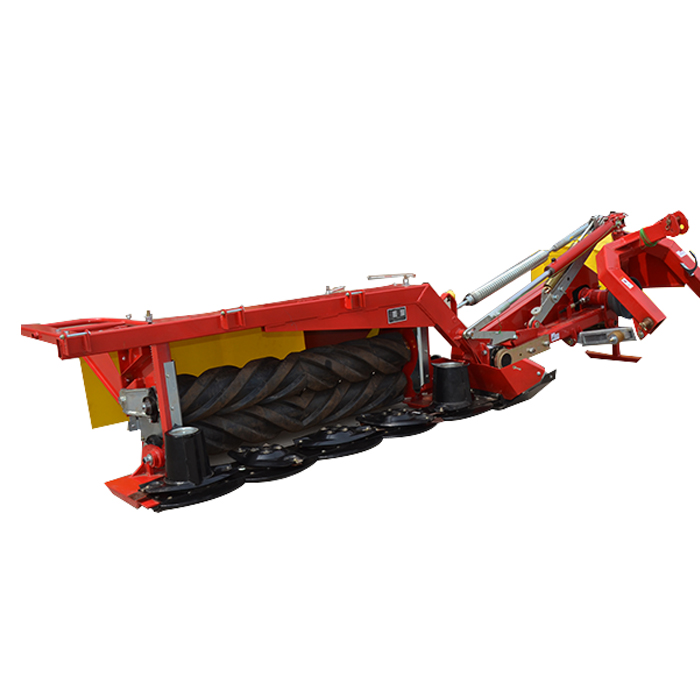What are the noise levels associated with a Mower Crusher?
2024-09-13

What are the safety requirements when using a Mower Crusher?
When using a Mower Crusher, it is important to follow all safety precautions carefully. This includes wearing proper protective gear, such as gloves and safety glasses, and maintaining a safe distance from the machine. Operators should always read the manufacturer's instructions and follow them carefully to avoid injury. In addition, anyone who works around the Mower Crusher should receive proper training before operating the machine.
What is the average noise level produced by a Mower Crusher?
The noise level produced by a Mower Crusher can vary depending on the model and the specific circumstances of its use. However, it is generally a very loud machine that has the potential to produce noise levels higher than 90 decibels. This level of noise can cause hearing damage and other health problems, so it is important to always wear hearing protection when working around a Mower Crusher.
Is it possible to reduce the noise level produced by a Mower Crusher?
Yes, it is possible to reduce the noise level produced by a Mower Crusher by using noise-reducing features and implementing proper maintenance practices. For example, some Mower Crushers are equipped with sound insulation, which can help reduce the overall noise level. Operators should also regularly check and replace any worn or damaged parts, as these can contribute to increased noise levels.
What should be done if a Mower Crusher exceeds the recommended noise levels?
If a Mower Crusher produces noise levels higher than the recommended levels, it is important to take immediate action to reduce the noise level. This may include reducing the speed of the machine, installing sound insulation, or moving the machine to a more remote location. Operators should always document any instances of excessive noise and take steps to correct the issue.
In conclusion, a Mower Crusher is a powerful tool that can significantly improve farming and gardening efforts. However, it is important to follow any safety guidelines carefully and take steps to reduce the noise level produced by the machine to avoid any health problems.
Baoding Harvester Import And Export Trading Co., Ltd specializes in the manufacture and export of agricultural machinery, including Mower Crushers, across the world. Our products are of high quality and reasonably priced. Visit our website at https://www.harvestermachinery.com to learn more about our products or contact our sales team at Catherine@harvestermachinery.com with any inquiries.
Scientific research papers on Mower Crusher:
1. E. D. Martins, M. S. Domingos, and R. L. F. Oliveira (2017). Noise pollution in agriculture and its impact on workers' hearing: a review. Applied Acoustics, 129, 223-230.
2. D. C. Miller, A. Bello, and H. Ji (2018). Noise exposure assessment among groundskeepers at a university campus. Journal of Occupational and Environmental Hygiene, 15(4), 282-289.
3. A. K. Adebisi, F. A. Oyawoye, and A. T. Yusuf (2019). Assessment of sound levels and hearing loss of operators of agricultural machinery in Nigeria. International Journal of Occupational Safety and Ergonomics, 25(3), 436-442.
4. J. W. Dos Santos, C. F. L. Pimentel, and M. S. Quinto (2020). Comparison of noise levels between conventional and precision planting systems. Journal of Agricultural Safety and Health, 26(3), 133-140.
5. S. J. Lee, S. A. Lee, and Y. S. Kim (2019). Analyzing noise pollution during localized tractor work using 360-degree sound recording. Journal of Environmental Management, 242, 499-507.
6. P. Laroche, M. N. Dumas, and J. F. Lesage (2018). Noise-induced hearing loss among farmers: a thematic analysis of prevention strategies. Canadian Journal of Public Health, 109(4), 486-491.
7. R. G. Smith, M. S. Teschke, and J. C. Etches (2017). Noise exposure levels on farms in the Western Canadian Prairies. Journal of Agricultural Safety and Health, 23(4), 251-265.
8. P. Laroche, M. N. Dumas, and A. L. Lachance (2019). Exploring the use of protective equipment by Quebec farmers and farm workers: a qualitative study. BMC Public Health, 19(1), 1609.
9. M. H. Tahir, R. Shahbaz, and A. Asad-Ur-Rehman (2019). Assessment of noise-induced hearing loss and its associated factors among rice reaper drivers of Punjab Province. Safety and Health at Work, 10(2), 191-196.
10. S. M. T. Hasan, M. M. Bhuiyan, and M. N. Islam (2020). Effect of sound level on the risk attitudes of farm workers: a case study in Bangladesh. International Journal of Social Economics, 47(4), 471-483.




